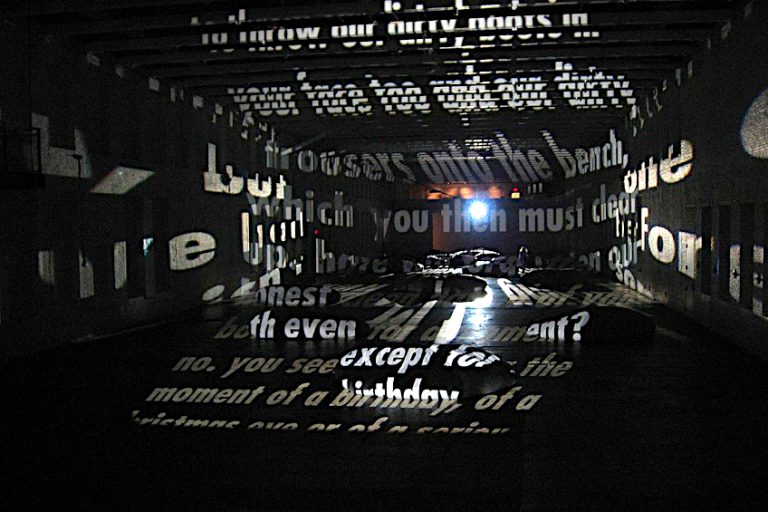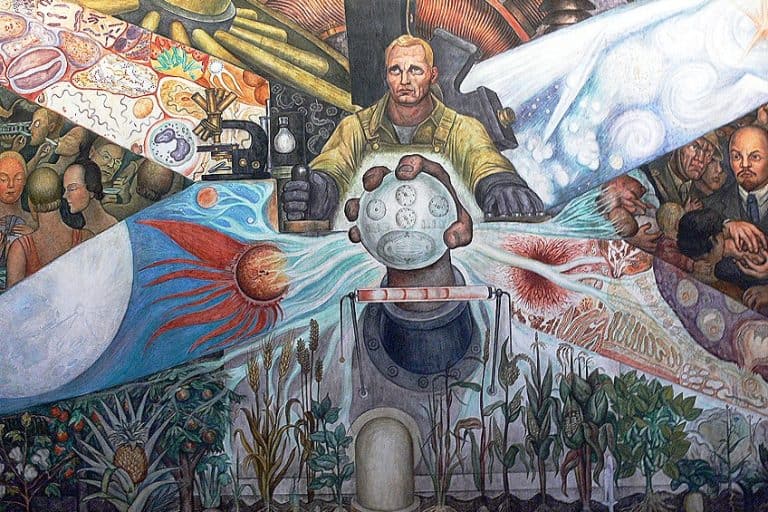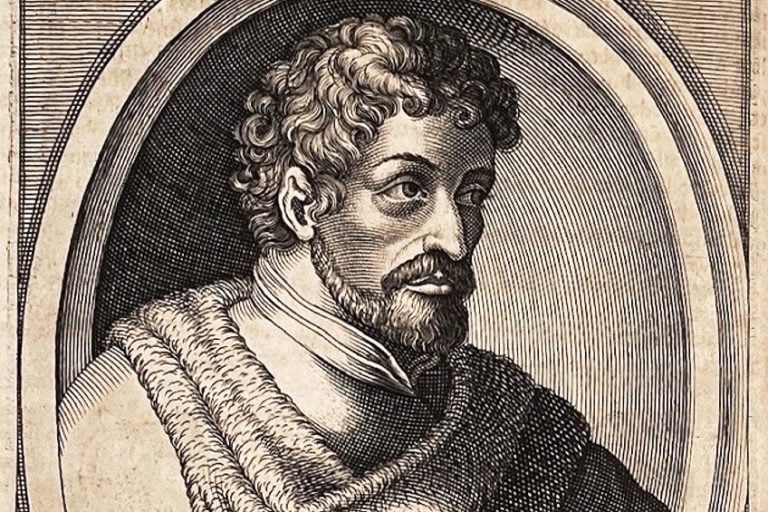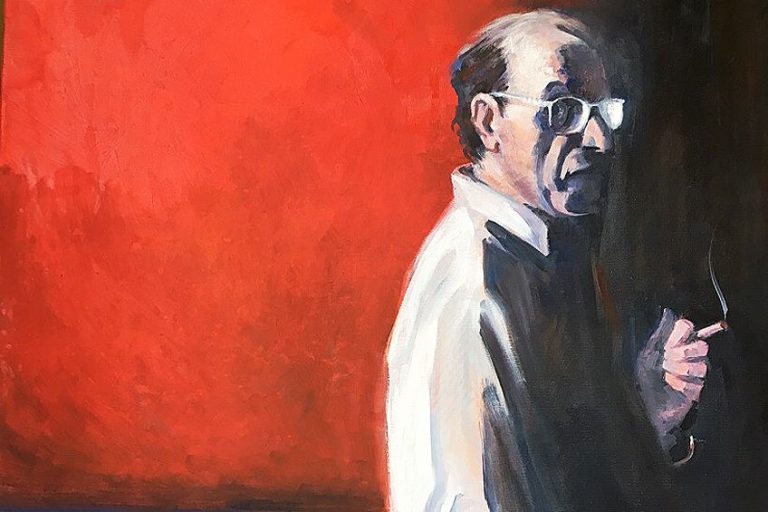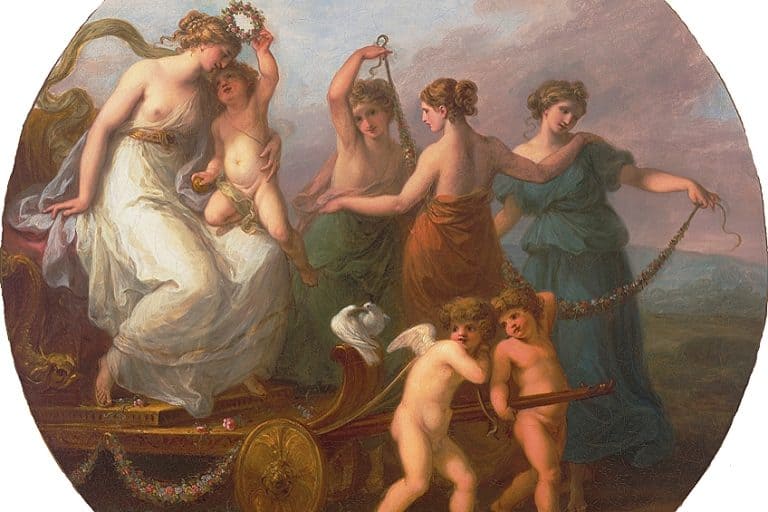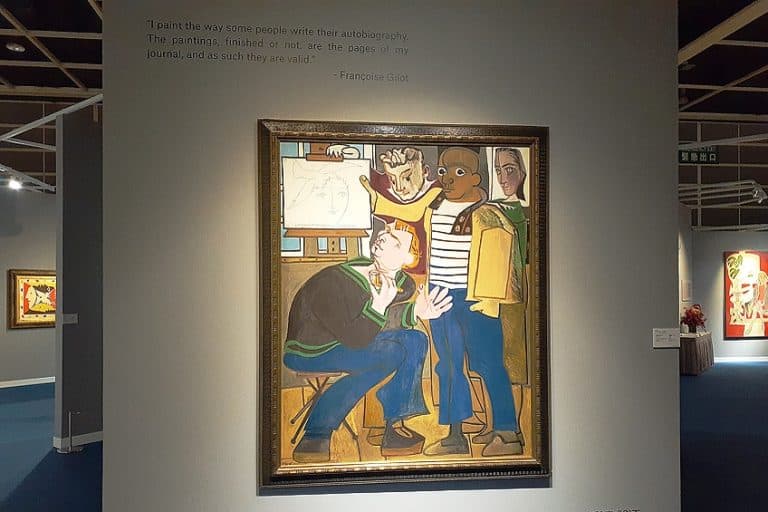Patrick Caulfield – The Life and Art of the British Printmaker
Patrick Caulfield, renowned for his captivating artwork, is a distinguished figure in the realm of contemporary art. His mesmerizing paintings have left an indelible mark on the art world, captivating audiences with their unique blend of simplicity and sophistication. Patrick Caulfield’s artistic genius shines through in his meticulous attention to detail and masterful use of color, resulting in visually striking compositions that transcend traditional boundaries. With a keen eye for capturing the essence of modern life, Caulfield’s artwork has become synonymous with a distinct aesthetic that continues to inspire and captivate art enthusiasts worldwide.
Artist Abstract: Who Was Patrick Caulfield?
| Name | Patrick Caulfield |
| Date of Birth | 29 January 1936 |
| Date of Death | 29 September 2005 |
| Nationality | British |
| Styles | Photorealism and Pop Art |
| Periods | Pop art |
Patrick Caulfield, born on January 29, 1936, in London, England, emerged as a prominent figure in the realm of contemporary art. Growing up in a creative environment, Caulfield’s passion for art was nurtured from an early age. He went on to study at the Chelsea School of Art and later at the Royal College of Art, where he honed his artistic skills and developed a distinct style that would come to define his career.
Early Career
In the early stages of his career, Patrick Caulfield experimented with various artistic approaches, exploring techniques such as abstract expressionism and pop art. It was during this time that he began to develop his signature style, characterized by clean lines, bold colors, and simplified forms.
His early works often featured mundane, everyday objects such as bottles, glasses, and furniture, which he portrayed with a striking graphic quality.
Rise to Fame
Caulfield’s breakthrough came in the 1960s when he gained recognition for his innovative approach to still-life painting. His meticulous attention to detail, combined with a sense of flatness and the absence of shading or perspective, created a sense of detachment and ambiguity in his compositions. Through his skillful manipulation of space and color, Caulfield transformed ordinary scenes into extraordinary visual experiences.
Professional Milestones
Throughout his career, Patrick Caulfield achieved numerous significant milestones. In 1964, he had his first solo exhibition at the Robert Fraser Gallery in London, which marked the beginning of his rise to prominence in the art world.
He went on to exhibit extensively in both solo and group shows, both nationally and internationally, earning critical acclaim for his unique artistic vision.
Caulfield’s Legacy
Caulfield’s influence on art history extends far beyond his own body of work. His distinctive style, which bridged the gap between pop art and abstraction, made a lasting impact on subsequent generations of artists. His ability to elevate the banal and transform everyday objects into compelling subjects paved the way for the emergence of the New Objectivity movement in the 1970s.

Patrick Caulfield in Context
Patrick Caulfield’s paintings, created during the late 1960s and early 1970s, were not only a product of his artistic genius but also reflected the socio-political climate of Britain during that period. It was a time of significant cultural and social change, with the country grappling with issues such as the decline of traditional industries, the rise of consumer culture, and the political unrest of the era.
The Swinging Sixties
Caulfield’s artwork emerged within the context of the swinging sixties and the Pop Art movement, which was characterized by a fascination with mass culture and consumerism. The influence of this movement is evident in Caulfield’s works, as he often depicted everyday objects and scenes from modern life. However, his approach differed from the brashness and irony typically associated with Pop Art.
Instead, Caulfield’s paintings exuded a sense of calm detachment, inviting viewers to contemplate the objects and spaces he portrayed.
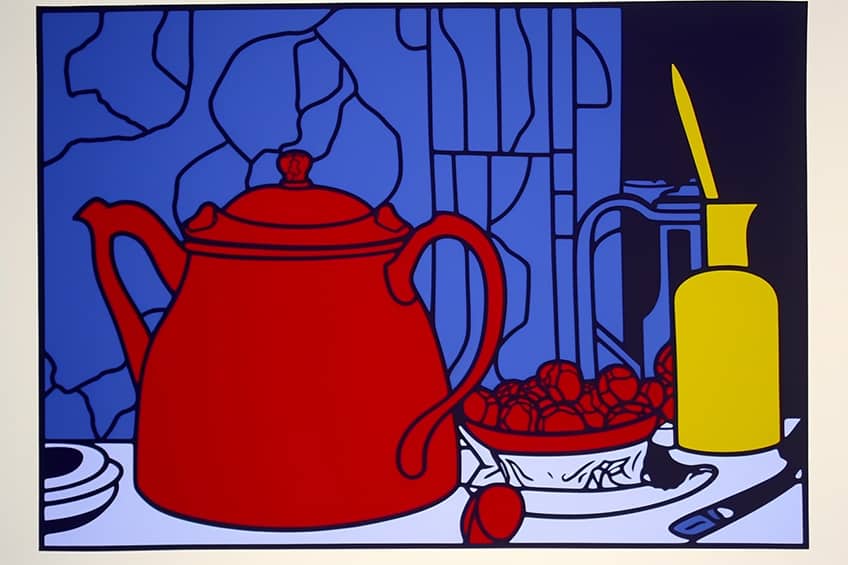
Socio-Political Upheaval in Britain
The 1960s and early 1970s also witnessed significant socio-political upheaval in Britain. It was a time of anti-establishment sentiment, protests, and questioning of traditional values. Caulfield’s paintings, with their emphasis on the banal and the ordinary, can be seen as a response to the prevailing social climate.
By elevating mundane objects to the status of art, Caulfield challenged the notions of what should be considered worthy of artistic representation, effectively questioning the established hierarchy of art and its relationship to society.
Art History Context
Within the art scene of the time, Caulfield’s paintings stood out for their unique blend of simplicity and sophistication. While his contemporaries, such as David Hockney (1937 – Present) and Richard Hamilton (1922 – 2011), were also exploring themes of consumer culture and everyday life, Caulfield distinguished himself through his distinctive graphic style and meticulous attention to detail.
His use of bold, flat colors and simplified forms created a visual impact that set his work apart from others. Caulfield’s artistic approach resonated with both critics and art enthusiasts, leading to significant recognition and success.

His first solo exhibition in 1964 marked the beginning of his rise to prominence, and he continued to exhibit extensively throughout his career, both in the UK and internationally. His contributions to the art scene of the time were acknowledged with various awards and honors, solidifying his position as a significant figure in the British art world.
Patrick Caulfield’s Artwork
Patrick Caulfield’s artworks are characterized by distinctive technical features that contribute to their visual impact and unique aesthetic. Known for his meticulous attention to detail and masterful use of color, Caulfield’s paintings showcase a fusion of traditional painting techniques with a contemporary sensibility. Understanding the technical characteristics of his artworks provides insight into the artist’s process and the deliberate choices he made to convey his artistic vision.
Delineation of Forms and Objects
One prominent technical aspect of Caulfield’s paintings is his precise delineation of forms and objects. He employed clean lines and sharp edges to define shapes, creating a sense of graphic clarity in his compositions. This precision gives his artworks a crisp, almost graphic quality, enhancing the visual impact and contributing to their overall sense of balance and order.
Color played a central role in Caulfield’s artistic vocabulary. He employed a palette that was both vibrant and restrained, using bold and saturated hues juxtaposed with areas of flat, muted tones.
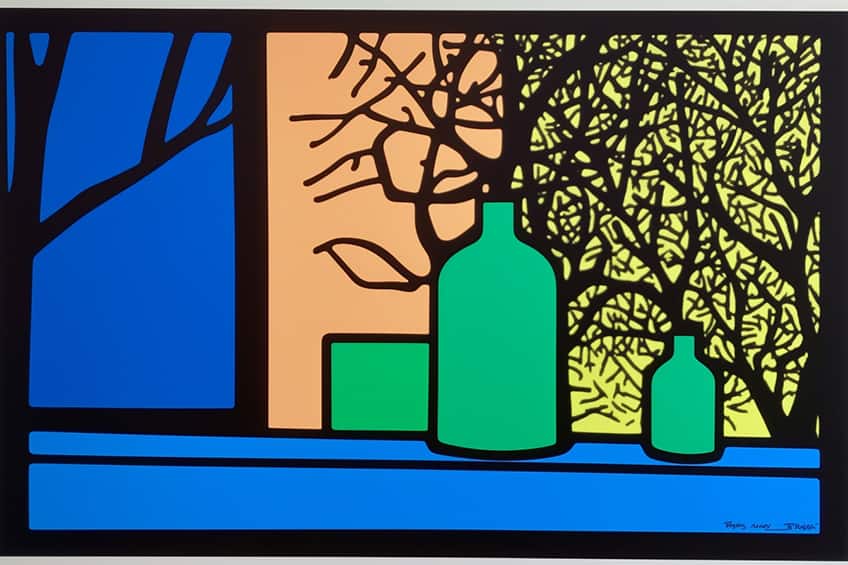
This intentional use of color created dynamic contrasts within his compositions, drawing attention to specific elements and establishing a visual hierarchy. Caulfield’s skillful color choices also conveyed mood and atmosphere, with certain paintings evoking a sense of serenity or even a touch of melancholy.
Color and Flat Planes
In addition to his distinctive use of color, Caulfield’s treatment of space was another noteworthy aspect of his technical approach. He often employed a flattened perspective, intentionally eschewing traditional depth and spatial cues. This flattened perspective, combined with the absence of shading or tonal gradients, created a sense of two-dimensionality, akin to a stylized depiction.
This approach added to the overall abstraction of his works, emphasizing the importance of the objects and forms themselves rather than their realistic representation.
Visual Harmony
Caulfield’s attention to compositional balance and visual harmony is also evident in his artworks. He carefully arranged objects and forms within the frame, considering their sizes, positions, and relationships to one another. This meticulous composition created a sense of order and balance, enhancing the overall aesthetic appeal and inviting viewers to explore the intricacies of each painting.

Multi-Media
Furthermore, Caulfield’s technical prowess extended beyond his paintings. He also explored other artistic mediums such as printmaking, ceramics, and even stained glass. His adaptability and skill in different mediums allowed him to experiment with different textures, materials, and techniques, further enriching his artistic repertoire.
Patrick Caulfield Paintings
Patrick Caulfield, a distinguished figure in contemporary art, created a body of work that captivated audiences with its unique blend of simplicity, sophistication, and meticulous attention to detail. In this article, we will delve into the visual and conceptual analysis of two of Caulfield’s most famous paintings, After Lunch (1975) and Interior with a Picture (1985). Through a careful examination of these artworks, we will uncover the artist’s technical prowess, his deliberate use of color and form, as well as the underlying themes that imbue his works with meaning.
After Lunch (1975)
| Title | After Lunch |
| Date | 1975 |
| Medium | Acrylic paint on canvas |
| Dimensions (cm) | 248,9 × 213,4 |
| Style | Photorealism and Pop Art |
| Location | Tate Gallery, London, United Kingdom |
Patrick Caulfield’s painting After Lunch (1975) is a mesmerizing exploration of interior spaces, inviting viewers into a world of intriguing juxtapositions and hidden narratives. Through a meticulous analysis of its visual elements and underlying conceptual themes, we unravel the enigmatic nature of this iconic artwork.
Visual Analysis
Caulfield’s precise delineation of forms and his bold, flat colors immediately command attention. In After Lunch, the composition is divided into two distinct sections. On the left side, a stark white table is set with dishes, cutlery, and a wine glass. The objects are rendered with sharp edges and graphic quality, contributing to a sense of detachment. On the right side, a glimpse of an adjacent room reveals a vibrant green chair against a red wall. The clean lines and contrasting colors create a visual tension that intensifies the overall impact of the painting.
Caulfield’s deliberate use of simplified forms and limited detail adds to the sense of mystery and ambiguity.
The absence of intricate shading or tonal gradients contributes to a two-dimensional quality, heightening the painting’s graphic impact. The white tablecloth, for example, is rendered as a flat plane, devoid of texture or shadow. This deliberate simplification prompts viewers to focus on the objects themselves and invites speculation about their significance.
Conceptual Analysis
Conceptually, After Lunch invites contemplation on the duality of public and private spaces. The distinct separation between the two areas within the composition creates a sense of isolation and detachment. The empty chair placed against the red wall signifies an absent presence, alluding to an unseen figure or narrative. This enigmatic element invites viewers to construct their own stories and interpretations, blurring the line between reality and imagination.
Caulfield’s choice to depict a mundane scene, such as a table set after a meal, raises questions about the significance of everyday objects and spaces.
By elevating the banal to the status of art, Caulfield challenges traditional notions of what is worthy of artistic representation. After Lunch encourages viewers to reevaluate the overlooked and find beauty in the ordinary. The painting’s minimalistic approach and deliberate arrangement of elements also convey a sense of tension and restraint. The stark white tablecloth and the emptiness of the space evoke a feeling of transience and emptiness. This theme of absence and fleeting moments adds to the contemplative nature of the artwork, encouraging viewers to reflect on the passing of time and the ephemerality of human experiences.
Interior with a Picture (1985)
| Title | Interior with a Picture |
| Date | 1985 |
| Medium | Acrylic paint on canvas |
| Dimensions (cm) | 205,8 × 244,2 |
| Style | Photorealism and Pop Art |
| Location | Tate Gallery, London, United Kingdom |
Patrick Caulfield’s painting Interior with a Picture (1985) is a captivating exploration of space and the interplay between representation and abstraction. Through a meticulous analysis of its visual elements and underlying conceptual themes, we unravel the intriguing nature of this iconic artwork.
Visual Analysis
Caulfield’s composition in Interior with a Picture is richly layered, inviting viewers to delve into a complex visual landscape. The focal point of the painting is a black-and-white photograph hung on the wall, depicting a palm tree against a bright blue sky. The photograph serves as a representational anchor within the composition. Surrounding the photograph, various objects such as a table, chair, and curtain are rendered with Caulfield’s characteristic flatness and clean lines.
The interplay of contrasting colors adds visual depth to the painting. The vibrant blue of the sky against the muted tones of the room creates a striking contrast, drawing attention to the central photograph.
Caulfield’s careful composition, with the curtain partially obscuring the photograph, further enhances the tension between reality and artifice. The curtain acts as a veil, teasing viewers with glimpses of the photographic representation while simultaneously reminding them of the constructed nature of the painting itself.
Conceptual Analysis
Conceptually, Interior with a Picture explores the notions of escapism and the power of art to transport the viewer. The photograph of the palm tree acts as a window to a different world, offering an escape from the banality of the interior setting. The representation of the palm tree symbolizes a desire for a different reality, evoking a sense of longing and yearning for an idyllic place beyond the confines of the room.
Caulfield’s juxtaposition of the representational photograph with the stylized surrounding objects raises questions about the nature of reality and the role of art in our perception of it.
The contrast between the photographic image and the abstracted forms challenges viewers to contemplate the boundaries between representation and abstraction, inviting reflection on the ways in which we construct and interpret our surroundings.
The curtain, partially obscuring the photograph, serves as a visual metaphor for the transformative power of art. It reminds viewers of the constructed nature of the painting, highlighting the idea that art has the ability to alter our perception and transport us to different realms. The tension between the curtain and the photograph underscores the inherent tension between reality and artifice, further emphasizing Caulfield’s exploration of the boundaries between representation and abstraction.
In conclusion, the artistry of Patrick Caulfield, as exemplified by his captivating artwork and mesmerizing paintings, showcases his technical mastery, thought-provoking conceptual depth, and profound influence on the art world. Caulfield’s meticulous attention to detail, accurate portrayal of shapes, and daring use of color contribute to the visual impact of his paintings. Through his exploration of interior spaces, everyday objects, and the interplay of reality and artifice, Caulfield challenges traditional artistic conventions and invites viewers to contemplate the ordinary in extraordinary ways.
Frequently Asked Questions
Who Was Patrick Caulfield?
Patrick Caulfield was a renowned British artist known for his distinctive style and contributions to contemporary art. Born in London in 1936, Caulfield emerged as a prominent figure in the art scene during the 1960s and 1970s. His paintings, characterized by precise delineation of forms, bold use of color, and a blend of representation and abstraction, captured the essence of modern life. Caulfield’s meticulous attention to detail and his ability to elevate mundane objects to the status of art have made him an influential figure in the art world. His artworks continue to be celebrated for their visual impact, conceptual depth, and lasting legacy in shaping the artistic landscape.
What Is Pop Art?
Pop art is an art movement that emerged in the 1950s and reached its peak during the 1960s. It is characterized by its incorporation of popular culture and consumerism into artistic expression. Pop art artists drew inspiration from mass media, advertising, comic books, and everyday objects, often incorporating images and techniques from popular culture. The movement aimed to blur the boundaries between high and low art, challenging traditional notions of what could be considered as art. Pop art’s vibrant colors, bold imagery, and use of irony and satire aimed to reflect and critique the commercialized and mass-produced nature of modern society. Its impact on the art world was significant, influencing subsequent generations of artists and shaping the way we perceive and appreciate popular culture.
Nicolene Burger is a South African multi-media artist, working primarily in oil paint and performance art. She received her BA (Visual Arts) from Stellenbosch University in 2017. In 2018, Burger showed in Masan, South Korea as part of the Rhizome Artist Residency. She was selected to take part in the 2019 ICA Live Art Workshop, receiving training from art experts all around the world. In 2019 Burger opened her first solo exhibition of paintings titled, Painted Mantras, at GUS Gallery and facilitated a group collaboration project titled, Take Flight, selected to be part of Infecting the City Live Art Festival. At the moment, Nicolene is completing a practice-based master’s degree in Theatre and Performance at the University of Cape Town.
In 2020, Nicolene created a series of ZOOM performances with Lumkile Mzayiya called, Evoked?. These performances led her to create exclusive performances from her home in 2021 to accommodate the mid-pandemic audience. She also started focusing more on the sustainability of creative practices in the last 3 years and now offers creative coaching sessions to artists of all kinds. By sharing what she has learned from a 10-year practice, Burger hopes to relay more directly the sense of vulnerability with which she makes art and the core belief to her practice: Art is an immensely important and powerful bridge of communication that can offer understanding, healing and connection.
Nicolene writes our blog posts on art history with an emphasis on renowned artists and contemporary art. She also writes in the field of art industry. Her extensive artistic background and her studies in Fine and Studio Arts contribute to her expertise in the field.
Learn more about Nicolene Burger and the Art in Context Team.
Cite this Article
Nicolene, Burger, “Patrick Caulfield – The Life and Art of the British Printmaker.” Art in Context. August 10, 2023. URL: https://artincontext.org/patrick-caulfield/
Burger, N. (2023, 10 August). Patrick Caulfield – The Life and Art of the British Printmaker. Art in Context. https://artincontext.org/patrick-caulfield/
Burger, Nicolene. “Patrick Caulfield – The Life and Art of the British Printmaker.” Art in Context, August 10, 2023. https://artincontext.org/patrick-caulfield/.




